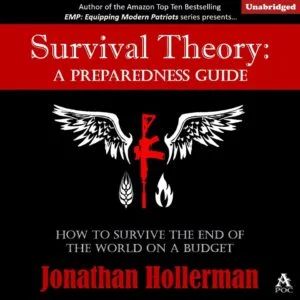Stop & Take A Breath
Once someone decides to prepare they immediately tend to feel a sense of panic or urgency to get prepared and quickly. I think this feeling comes from the realization of just how unprepared they actually are. This feeling is normal and it tends to cause new preppers to make some really basic mistakes. I want you to slow down and realize the following before starting your year-long paycheck prepping journey. Even if you do not use my method of prepping you still need to really need to at-least read this!
Ten prepping Rules to Guide Your Preps
What are you prepping for?
What is your plan to deal with the above situations? Are you going to bug out or bug in?
Write out your plan so you can review it and fine-tune the plan.
Based on your plan what items are critical to buy so you can be successful at executing your plan? For example, if you plan to bug out by boat you may want to buy a boat. If you plan to bug out by car you may want to invest money into prepping your car and not fancy Back packs.
Use this information to create a personal wish list to help guide your purchases. I have plenty of suggestions and it’s easy to get gear happy. Use this plan and wish list to help you prioritize your preps.
You Can Not Buy Everything!!! You still need to be financially responsible and try to save a few bucks a paycheck as well.
Develop survival skills and everyday skills that will help you execute your plan and to become more self-reliant. These skills are as important if not more important than most gadgets and gizmos!!! KNOWLEDGE WEIGHS NOTHING! Skills travel with you in every situation.
Be flexible and adjust your plan constantly. Prepping is not made up of prep lists that you take a “set it and forget it “ approach. You need to constantly reevaluate, improve and take stock of your journey. Every-time you take a trip or take an inventory you will always find items or skills you are lacking. Take notes and make the needed adjustments.
In your plan set obtainable milestones that lead you to your end goal so you stay focused. For example, if you want 2 months of food on hand so you can bug in after a natural disaster then set your first goal at two weeks of food, then a month and so on. Don’t build a bunker on day one!
This is a longterm goal that can not be accomplished overnight focus on building a foundation of small goals and key items that help answer your needs for Water, Food, Fire, Shelter, health, and security first.
How To use My Site & Paycheck Prepping Method:
My lists and guides are here to help you stay organized and focused through your prepping journey. I hope you use these suggestions to become more self-reliant and prepared for life’s ups and downs.
All of my links lead to Amazon of which I am an affiliate, so I will get a small cut from Amazon for any of your purchases at no extra cost to you. The price is the price you see. Even if you do not purchase the item it is a great way to price check items at your favorite store with the price on Amazon and could help you save money.
Very few people could afford to complete every suggested project or to buy every suggested prep on each list so create your plan and let that prioritize your preps. Take note of items or projects you would like to revisit on future paychecks.
I have also posted Prep Lists throughout my site to give you multiple options to inspire you along the way. I have multiple lists for building a get home bag, EDC bag, Bug out Bag, Medical kits, Auto Kits, etc. I have multiple versions of each as prepping is a personal process and one list may speak more to you and your plan.
Sign up for my Newsletter and I will send you reminders every two weeks on payday to help you prepare and learn more. I will send you deals I get from my partners, post-how-to videos, and share projects that you can do to get more prepared. We are all busy and little reminders go a long way!










